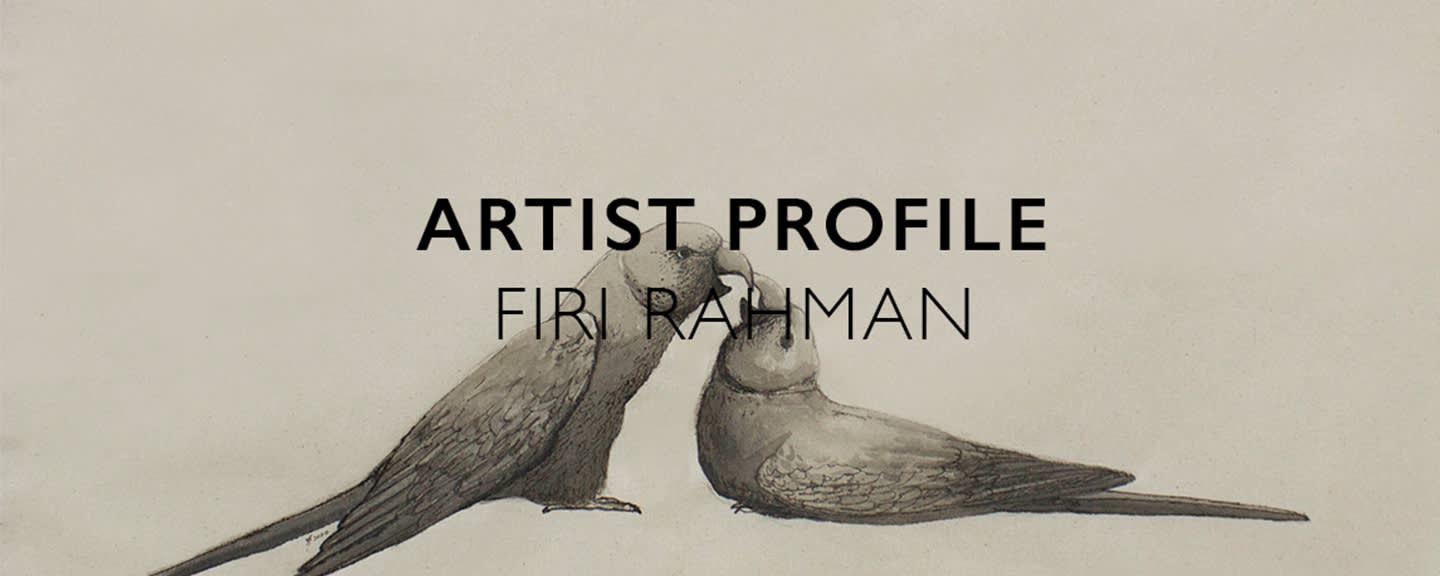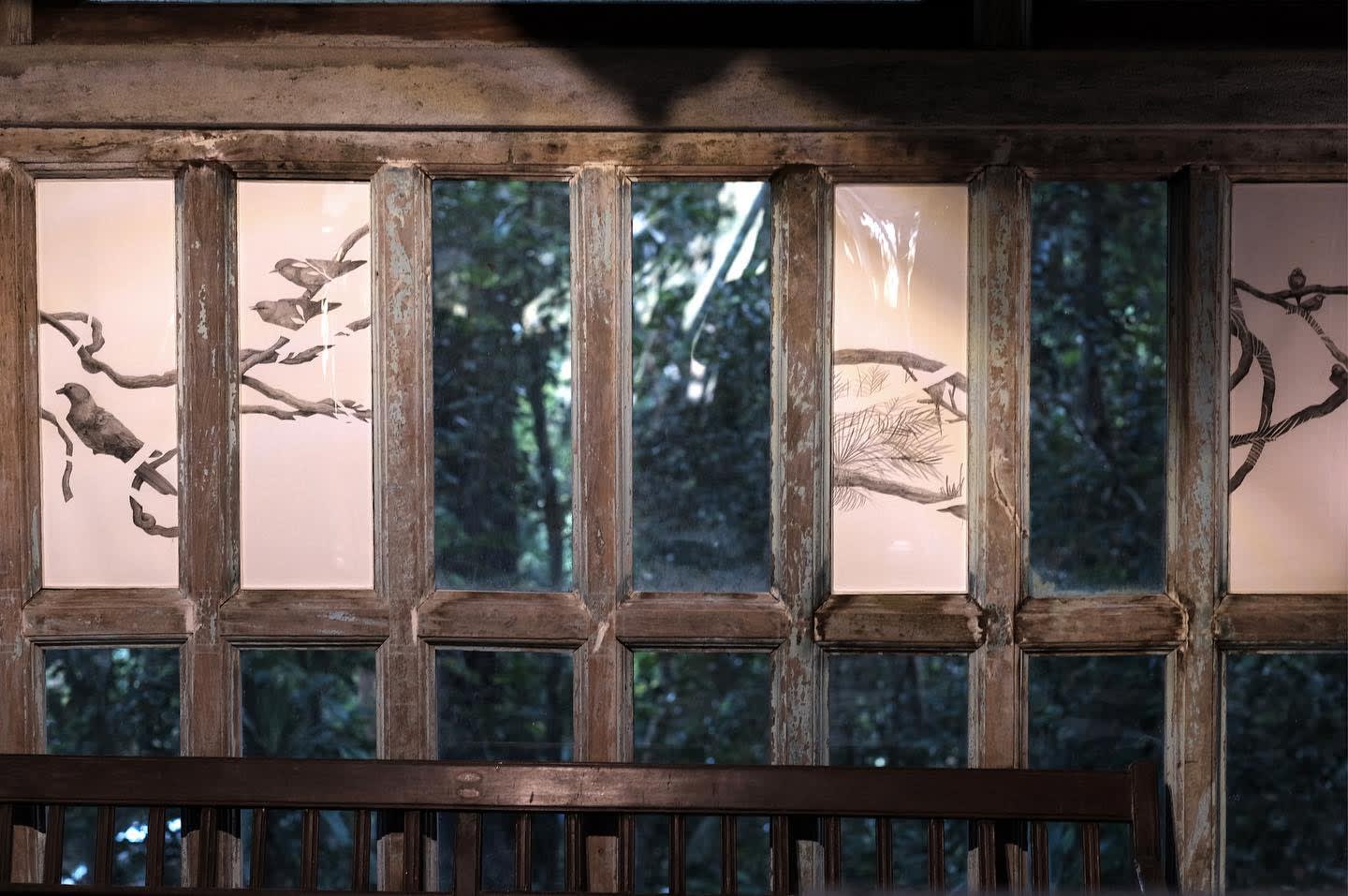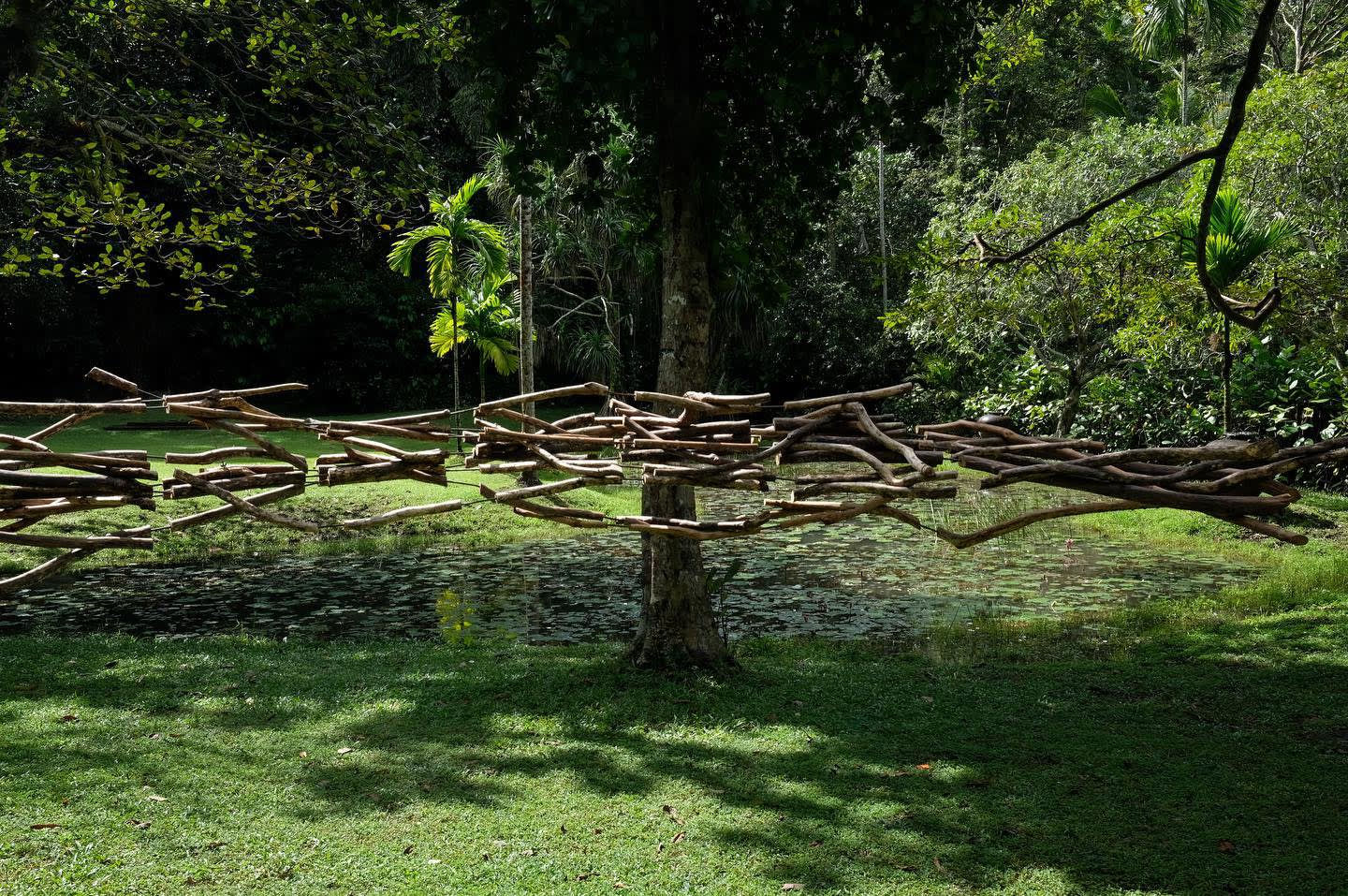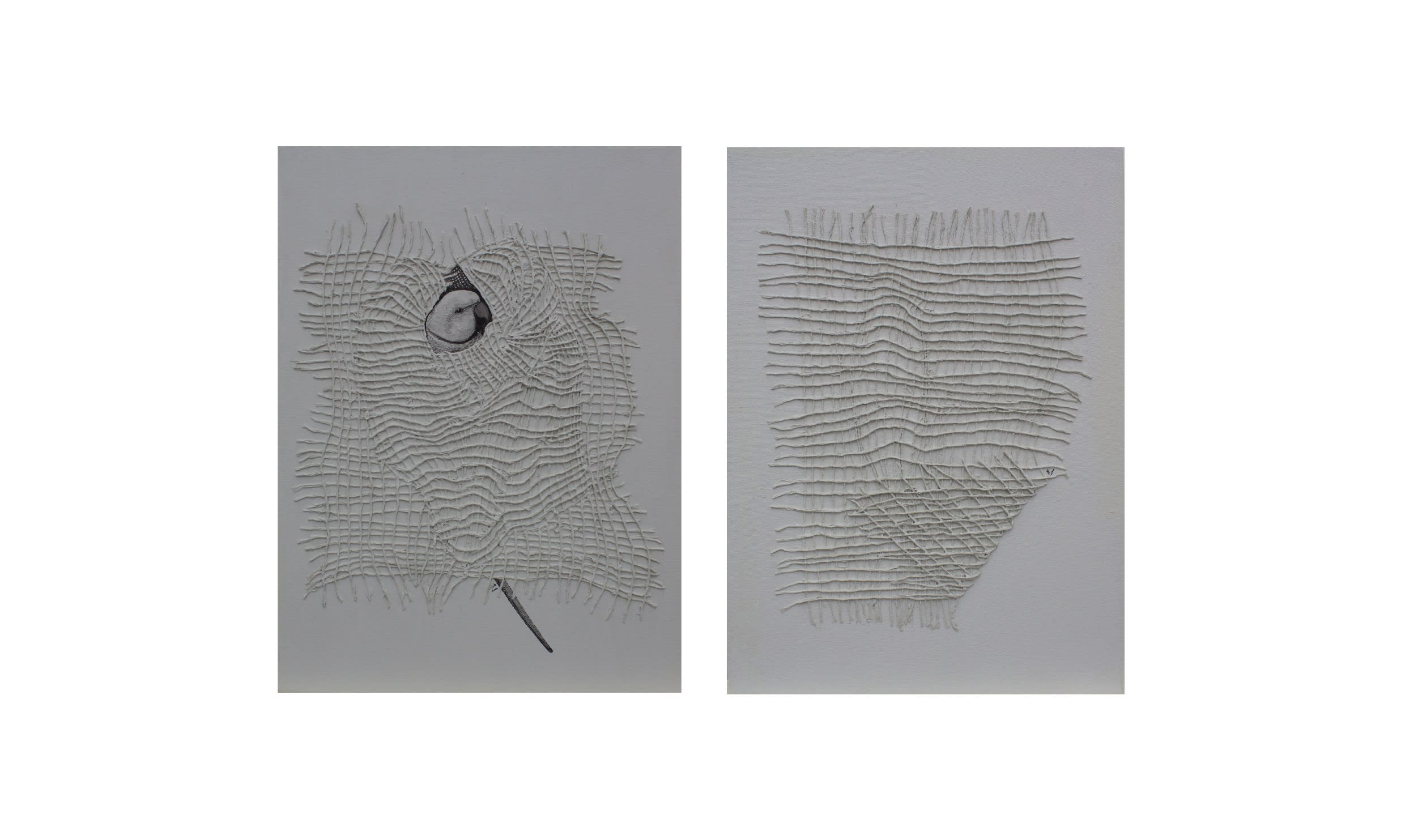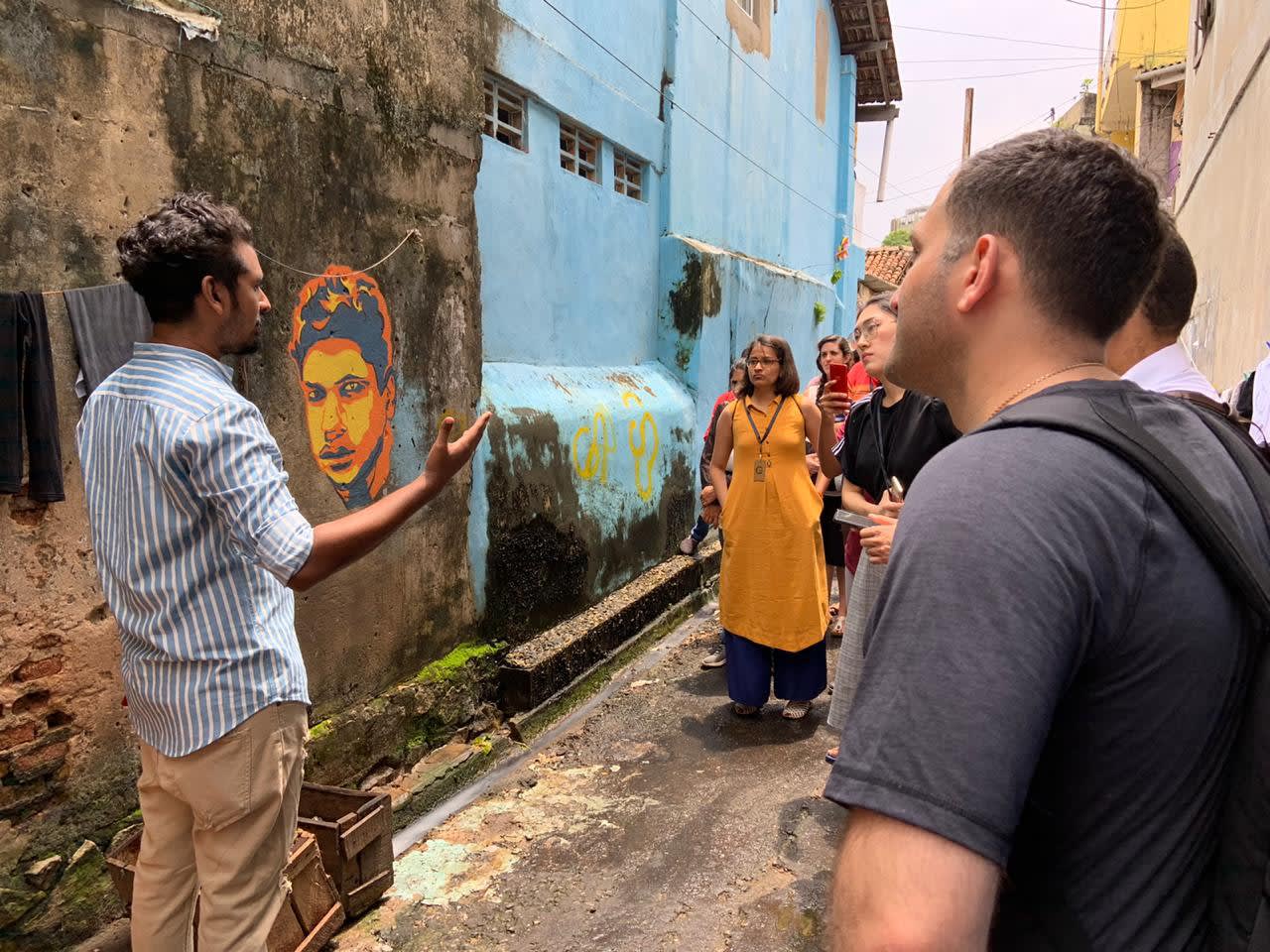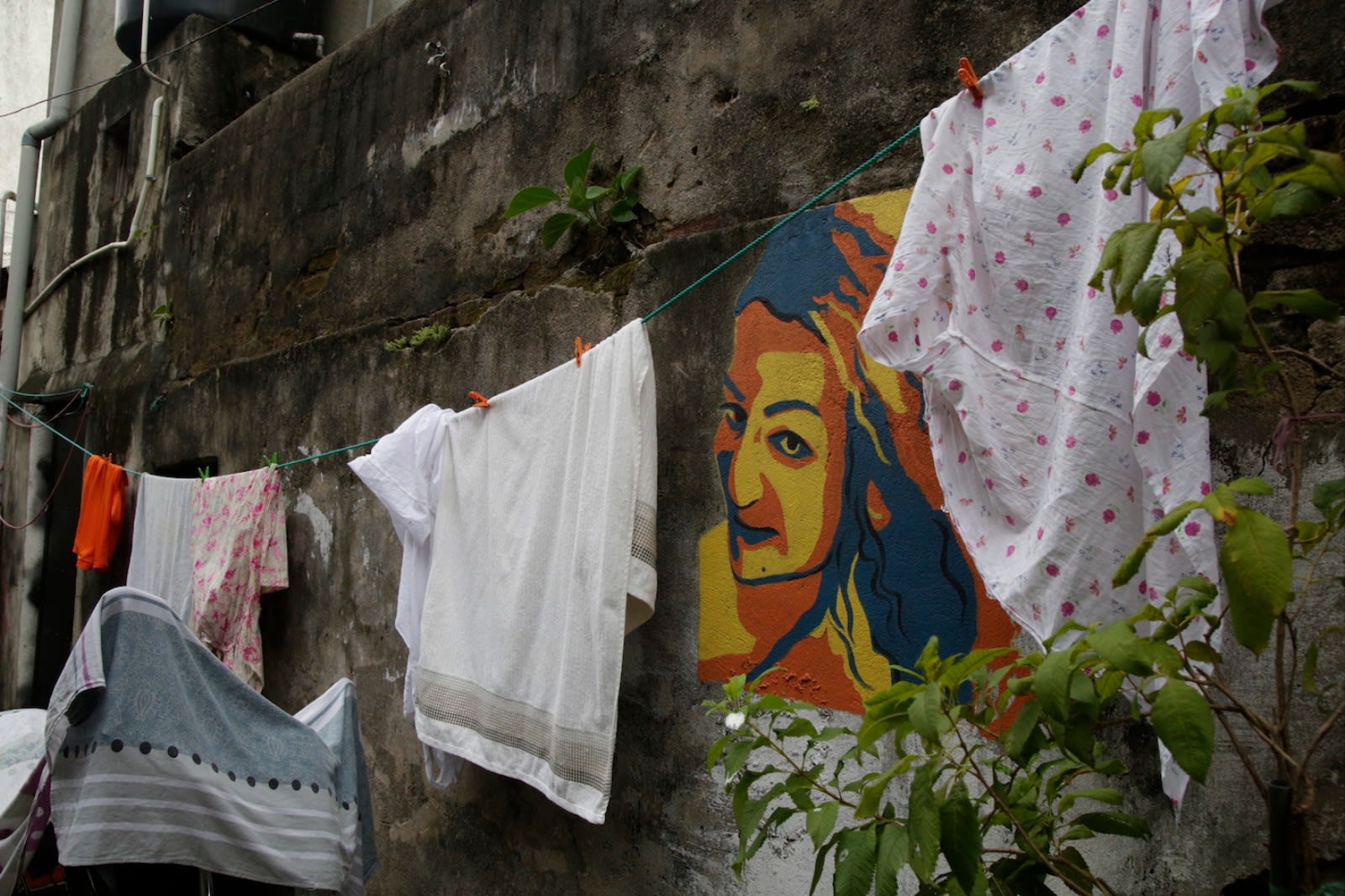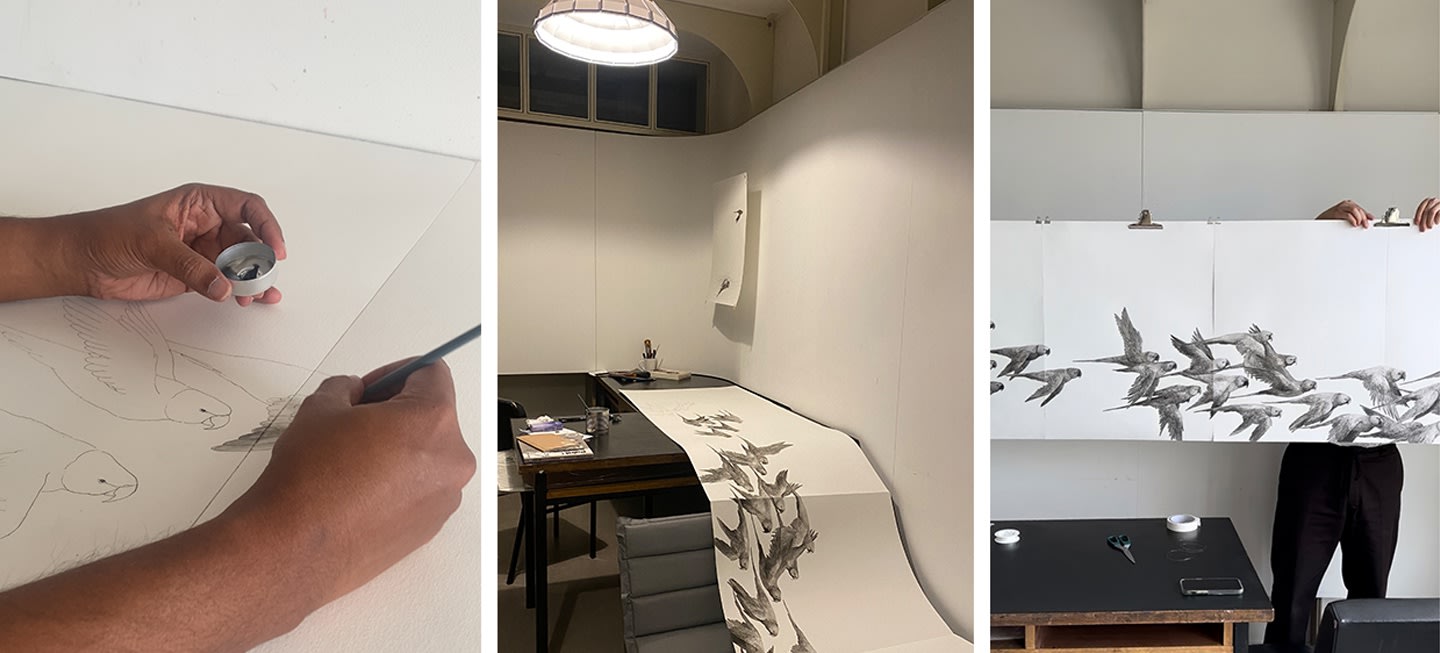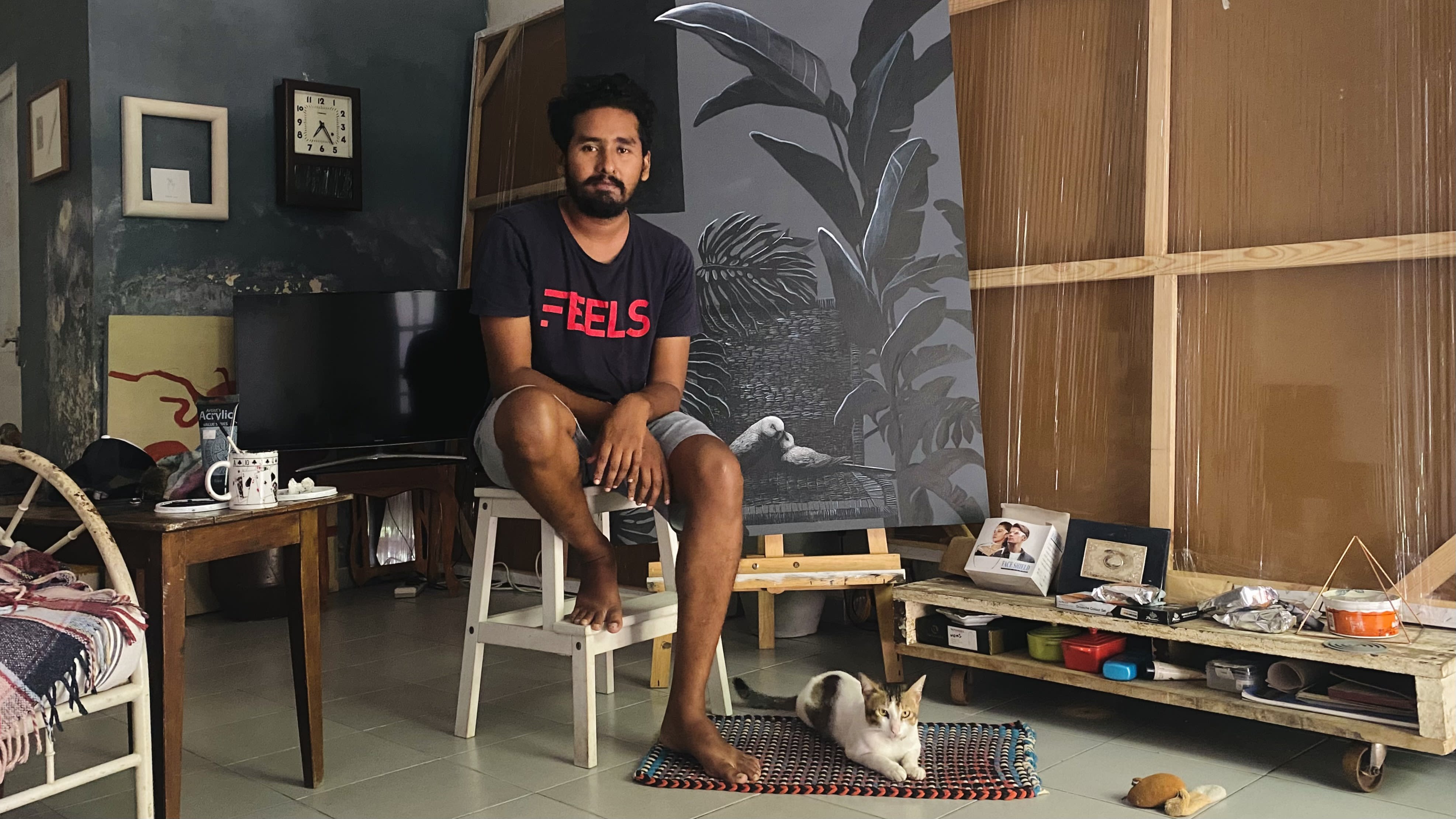|
|
|
Firi Rahman’s work is often concerned with the contentious relationship between humankind and the animal kingdom. He is particularly interested in the interactions between animals and urban environments, and the responsibility societies share in protecting biodiversity. His works, brought to life through his sombre and monochromatic style, are an intimate and sensitive engagement with wildlife. Even in their minimalism, the dexterity of his skill and close engagement with the subject imbues it with a palpable quality — compelling an empathetic response from the viewer. Firi earned a Foundation in Art and Design (2012) from City and Guilds at Manchester College in the United Kingdom. He is a cofounder of We Are From Here, a collective project which highlights a deeply interconnected community in Slave Island whose home-base is increasingly threatened by gentrification for state and corporate interests. Firi’s work has been exhibited at the Colombo Art Biennale (2016), and Colomboscope (2016 and 2019). His works belong to private collections in Sri Lanka, Switzerland, India, United Kingdom, and the USA. He was also selected for the Cité Internationales des Arts residency in France (2023).
|
 Studio portrait of Firi
|
|
you were in the us recently. tell us a bit more about thE trip.
I got nominated for the IVLP (International Visitors' Leadership Program) Program in the US. The theme for this year's program was creating social change through art. I got nominated because of my work with the We Are From Here project. It was a three-week program, representing 17 different countries and different kinds of disciplines, and included curators, museum directors, theatre performers and visual artists.
The idea was that we get a chance to see the different artist-led social change projects that are present across the US, and to understand the skills needed to run such projects - like writing a funding proposal, collaborating with organisations and working as a team. We got to visit museums, galleries and artist collectives and meet with local artists involved in these projects. We travelled to five states, Washington, New York, Michigan, Seattle and Louisiana.
Firi at Hirsshorn Museum in Washington DC (Left) Artist presentation at Seattle, Washington (Right)
It was really fun but at times it also felt like too much to fit into a day. We would move from one thing to another and not really get a chance to absorb it all. There was a balance between work and fun. Some of the workshops we attended were quite formal with presentations but others were more casual with one-on-one conversations with artists.
Some artists presented their work, some showed videos but I didn’t have anything like that to show. They were a little more prepared than I was. Some of these artists were quite senior and had been working in this field for a while. Some of them had even exhibited at the Venice Biennale. It was really cool to be around them and learn more about their practice.
|
when you aren't travelling, what is a typical day for you?
I usually wake up quite early and get started on my work. The day depends on my mood and motivation. When there is an artwork, I’m eager to finish and I have motivation, I will work on it continuously. I will take a break for lunch and dinner and I might take a small break to have a nap. This has been my recent routine. On other days when I know that I have time to work on my art I will stick to my own deadlines. So, for example if I’m drawing a bird, I will concentrate on finishing one part of the bird. It might take a few hours or an entire day. I will keep working until it is finished. It depends on the deadline I give myself. Recently I have been quite busy so I have been working continuously.
|
|
|
you created your first site-specific installation In between: the Existence of Firdaus at Lunuganga. Can you elaborate on the process for creating this installation?
I was a little overwhelmed at first because I wasn't sure what kind of installation I wanted to work on. I knew that I wanted to do something outside because I really loved that garden space, they have at Lunuganga. After visiting the area, a couple of times, I realised that the space connected to another project I was working on and those drawings could be reinterpreted as 3D models. I was being quite ambitious in the scope of the installation but I was also quite mindful of the budget. I really didn’t want to bring anything alien into the environment and wanted to let the installation blend into the surroundings. I also wanted to keep to natural materials and let them decay over time. I also wanted to tap into Bawa’s philosophy for Lunuganga which was for the property to be an escape into nature.
Installation view, In between: the existence of Firdaus, Firi Rahman, Lunuganga, December 2023. Courtesy the Geoffrey Bawa Trust. Photograph by Diluckshan Puviraj
I found sticks in the area itself which I used to create the perch. I have built these types of perches for my birds, which I showcased at my last solo exhibition. A lot of my birds are injured and I have to take care of them, so I build these perches to make everything a little more accessible. I wanted to create these perches on a larger scale while also thinking about how architectural and organic forms could blend together. As an example, growing up in Colombo I’ve always been able to interact with nature by just looking out of a window. But there is always an architectural structure that acts as a barrier between the two. You see and interact with nature in relation to that structure.
Installation view, Perch, Firi Rahman, Lunuganga, December 2023. Courtesy the Geoffrey Bawa Trust. Photograph by Diluckshan Puviraj
|
has conservation and the natural world been a topic you have always engaged with?
I have always cared about these issues since I was a kid. I used to have these scrapbooks where I would cut out images from newspapers and magazines of animals and paste them onto the pages. I would sometimes add my own illustrations around them. I tried to curate these scrapbooks and make them perfect. I hate the white borders on stickers so I would cut out the border before using them. My uncle also used to bring these massive piles of fax paper which I would then draw on.
My grandmother kept birds and they were always a constant presence in our house. One day I found an injured bird and started take caring of it and this is something I continue to do. Constantly having parrots around the house also means I get to closely observe their behaviour and see the way human behaviours are mirrored in them. I feel very connected to the birds around me. During the Covid lockdown they were my constant companions.
Installation view on Enclosed, Saskia Fernando Gallery (2020) |
|
Your visual language has developed over the years. starting with a focus on the human face to an engagement with natural organisms. what kind of insight can you give us to the way your visual sensibility has evolved?
Firi Rahman, 2020, Covered, Mixed Media on Canvas
|
activism is a prominent throughline in your art and community outreach and spans from conservation to social justice. Can you elaborate for us how you understand these streams of practice.
The work I do with We Are From Here is very much activism, that is quite apparent. I always feel that the work I do in my neighbourhood should be for the people in that neighbourhood and not something that should be incorporated into the art I display. I feel like my work has two separate audiences and the work I do for one audience doesn’t always translate to the other.
For example, people don’t always understand the work I do for We Are From Here, because they don’t have any knowledge of archives or have a culture of visiting museums and art galleries. So, I try to take this into consideration when I think about how I should communicate my work. I do feel like I’m creating for two different communities and they don’t always understand my work. Even my family struggles to understand the kind of art I create to be displayed at the gallery. While a lot of my work can be seen through the lens of activism, it’s also something I enjoy doing.
Firi at a We Are From Here tour in Slave Island
We Are From Here has slowly evolved into an archiving project. It started as a mural project initially. We had collected items from around the neighbourhood. We had started having conversations on a visual project that could act as an archive with the items we had gathered but it came to a halt because of Covid. During Covid the walkthroughs of the neighbourhood and the mural projects couldn’t continue. This was when I started documenting the area through video and also documenting the interactions I had with images. It was then that the idea of putting together an archive materialised.
Once we started working towards an archival project we started getting invited to talks, workshops and architectural summits. I would wonder if I was the right person to be invited to all of these? I’m not a historian and I’m not an archivist. But I felt it was really important to document the way the community was changing.
Slave Island Murals, We Are From Here Project
|
you were selected for the Cité Internationales des Arts residency in France. Could you tell us a little bit about the project you worked on?
This was my first residency and I was very new to the process. I wrote a proposal at the start of the residency and started to think about the ideas I wanted to explore. I’m a self-taught artist and I don’t have a background in art history. I don’t get my inspiration from art movements or other great artists; I find my inspiration all around me. Because I don’t have that background, I was unsure of what I needed to include in the proposal but I wanted to relate my work to a research-based project that I could explore during the residency.
Surprisingly I saw a lot of parrots while I was in Paris, I saw quite a few in London as well and that was a subject that I already felt very connected to. I did some research on the topic and discovered that the French would bring back parrots for their exotic quality to be kept in menageries. These parrots would sometimes escape from the menageries and thrive in the urban environment. I identified with these parrots and their circumstances.
My mom had migrated to Italy and I am the only family member living in Sri Lanka. Since my brother’s passing my mom doesn’t like to come back to Sri Lanka. I sometimes feel stranded. I wonder if I should be with my mom because she feels we should be together as a family. Sri Lanka is my home. The question of what is home has been something I’ve always dealt with. Is it a place? a person? family?
So when I was going to Paris I kept my ideas quite open even though I had my proposal to guide me. That first month of the residency was quite slow while I was trying to work out my concept. I was staying on the fourth floor of a building in Paris and I got to see a lot of parrots nesting on the canopy of the trees. I witnessed how they were different from parrots I had seen in the wild. Their bodies and diet were different since they have had to adapt to a new urban environment. I really connected with this process because I would have to similarly adapt to the new environment I was living in. I had to adapt to this new language, new space, new weather, new food. I didn’t have any friends or family around so it was trying to find a small piece of home in Paris.
Firi during his residency in Paris (2023)
When I was getting ready to come to Paris and going through the airport, it was quite depressing to see so many people leaving the country. Flocks of people leaving their families. I too am part of that flock leaving the country, even if it is for a short period of time. I felt quite privileged even receiving my visa. I was leaving the country for a different purpose. Most people were leaving for a better life and a better future. So many people are thinking about migrating. It's the mindset most people have at the moment and that’s where the project for the residency came to me. |
you are involved in a lot of different projects. how do you relax or find a work life balance?
I don't have much of a social life. I have a small group of close friends and I only ever hang out with them. I might go out for exhibition openings or a show and that’s when I get to socialise and speak with other people.
Firi in his studio with his cat, Musky |
do you listen to music?
I do listen to music. I can’t watch TV or watch a movie. I can’t engage with anything visual but I can always get on a call and speak with someone while I work. I’m a little embarrassed by my music taste. I look very serene and calm while I draw but my earphones are blasting some crazy music which includes music by artists like Nicki Minaj and Doja Cat. |
are you reading anything interesting right now?
I don’t read much. I don’t watch anything. I find it really hard to concentrate and sit in one place to watch a TV show or a movie. I feel very uncultured because I don’t watch TV and movies. People would talk about Harry Potter and I feel like oops I don’t know about that. |
how do you reconnect with nature?
I take the opportunity to go to Lunuganga when I can. I will take my time and walk around and interact with nature. But a majority of the time I try to connect with nature at home and feel the influence of that in my work. |
